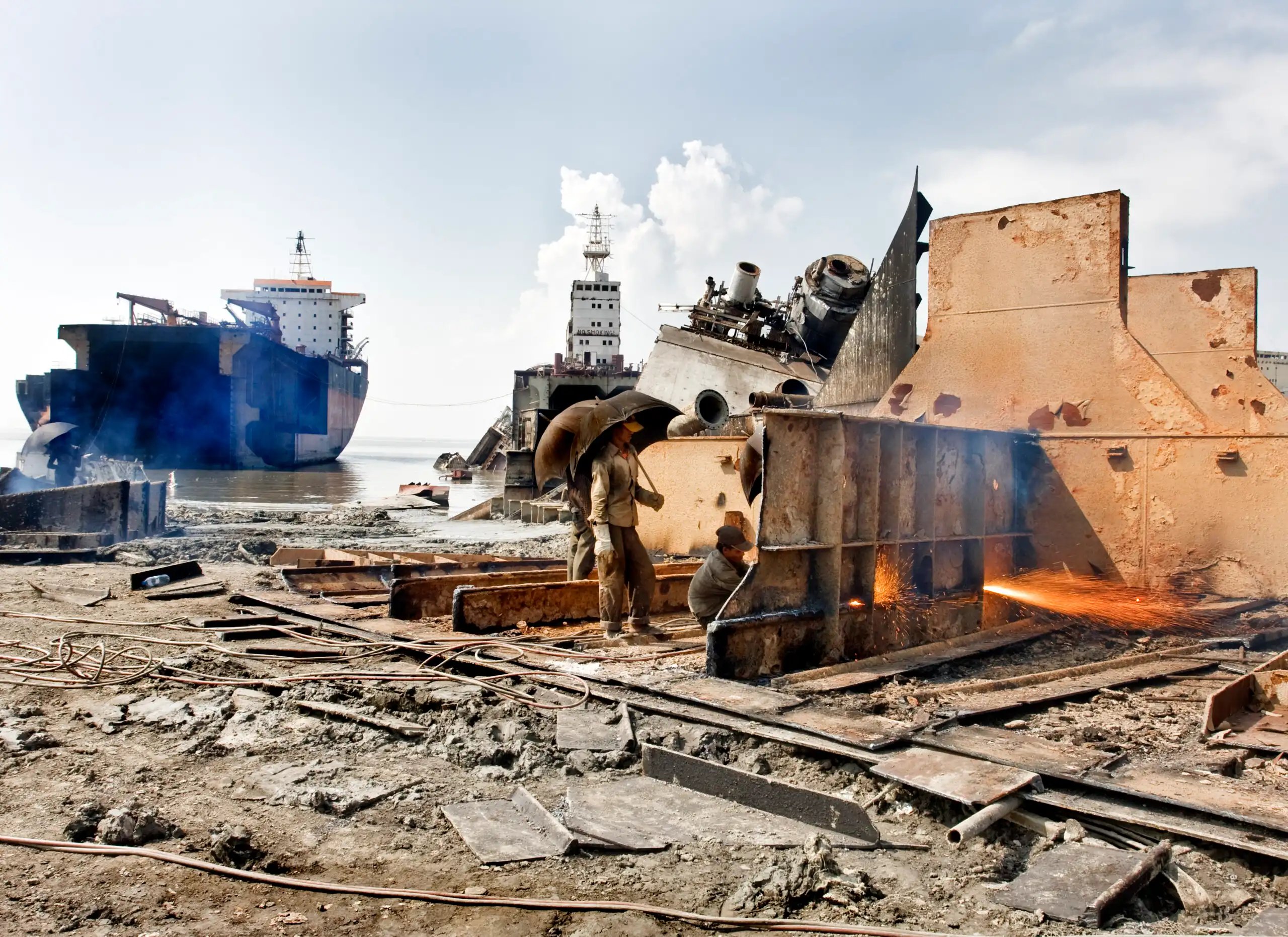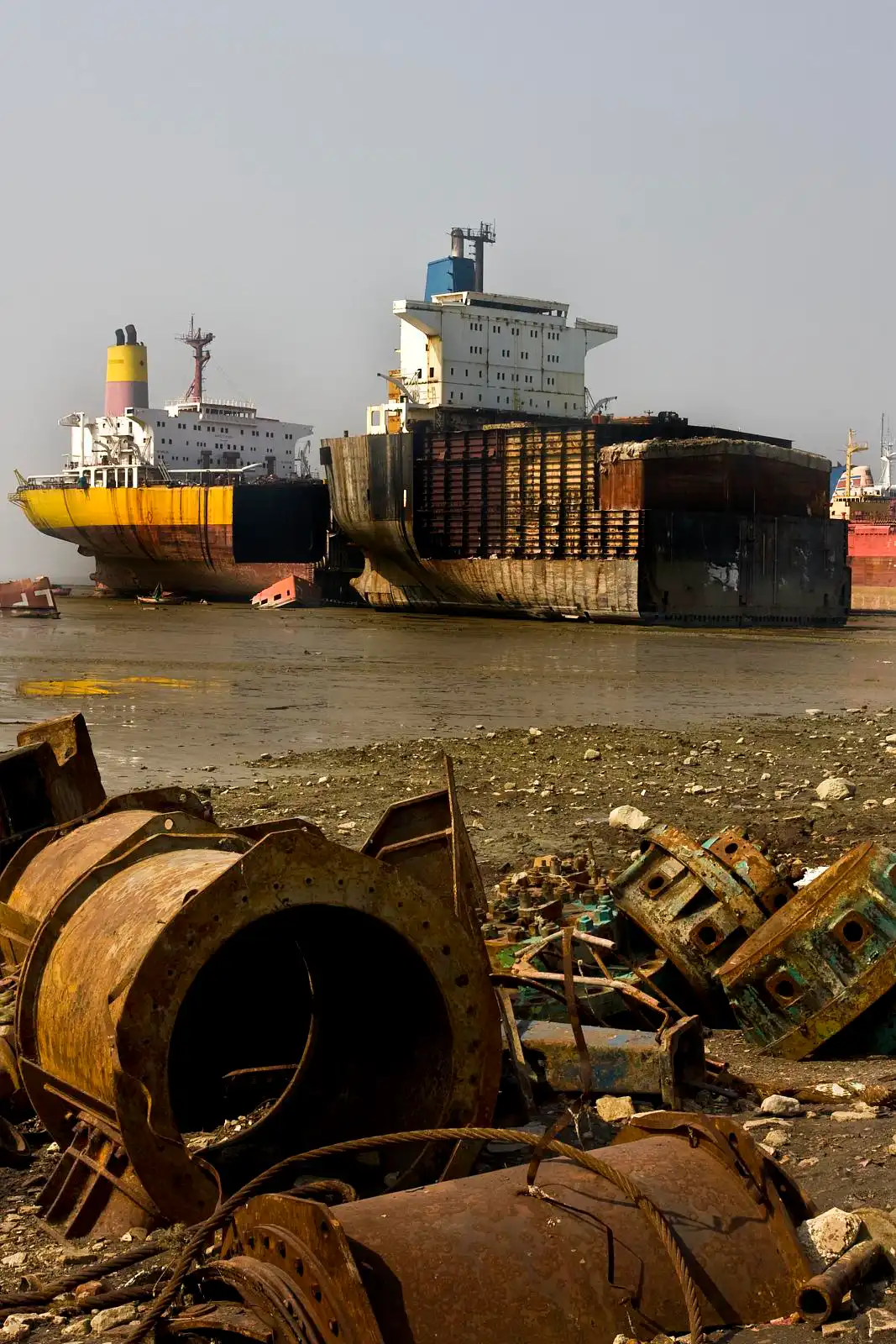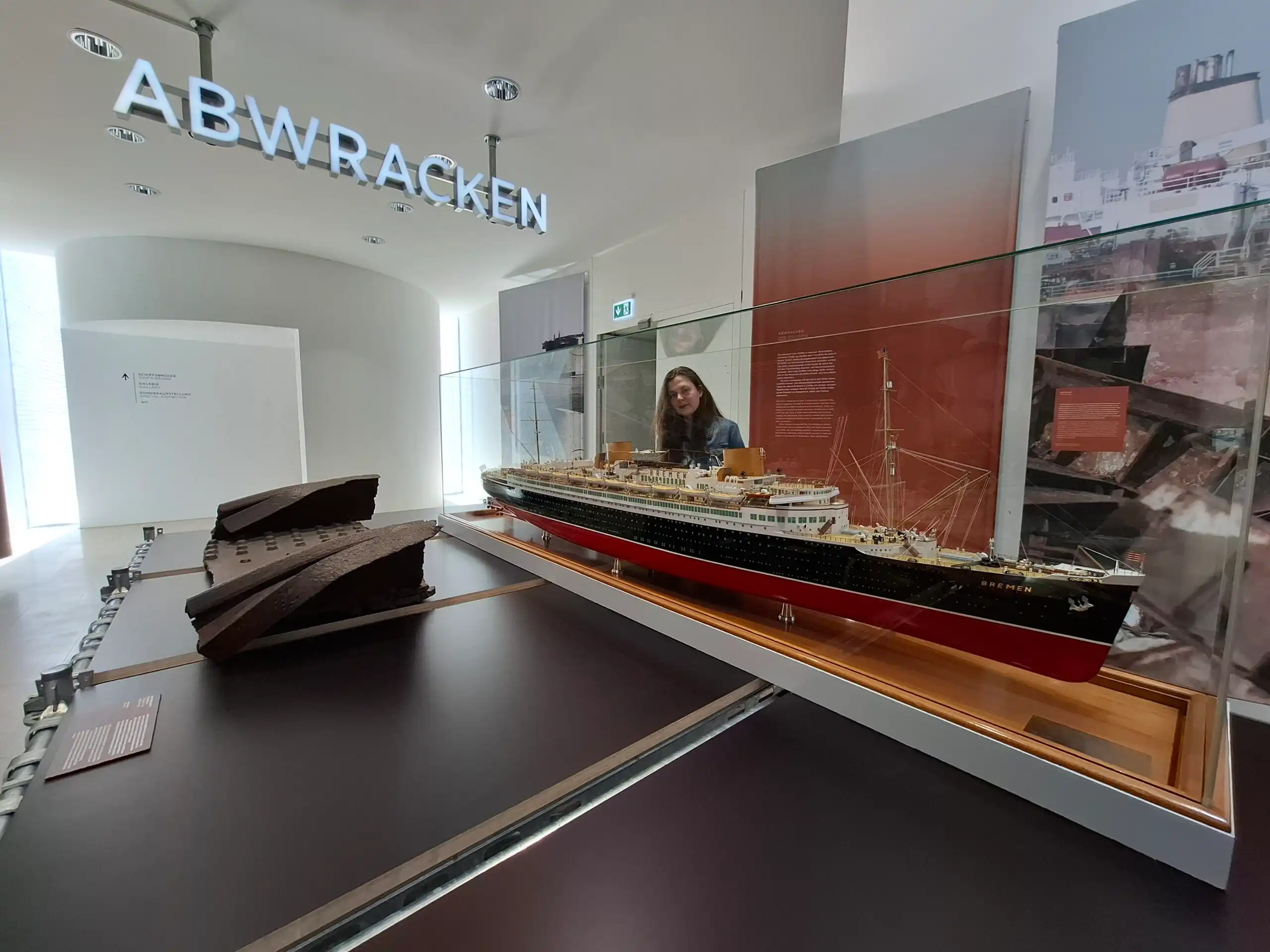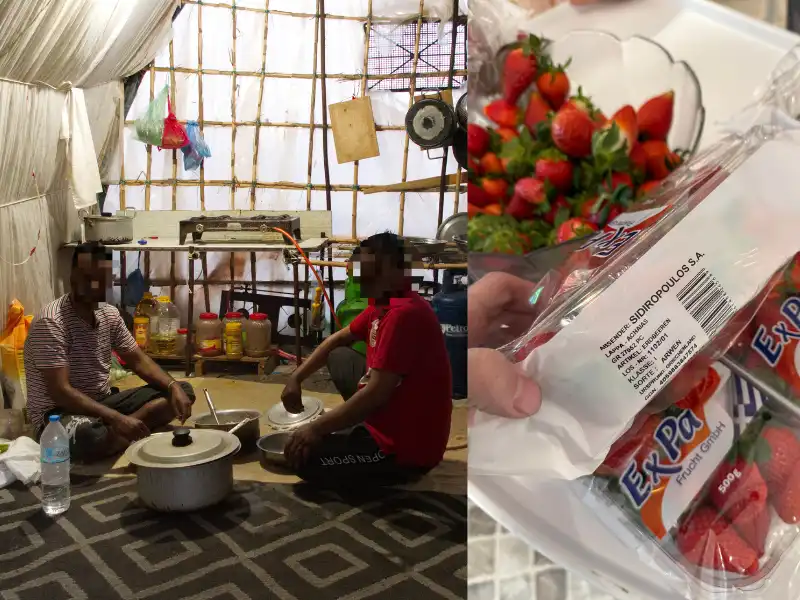Post
4 Min.

24. June 2025
Silent giants on their last journey
A half-disused ship’s hull rusts in the shallow water, where puddles of oil shimmer in every color of the rainbow. Furnishings, electronics and useful goods have already been sold – a huge sales market ensures that the livelihoods of many families depend on it. In front of the dead colossus, workers hammer away at the remains, cutting metal plates out of the ship’s skeleton with simple tools – until the skyscraper-sized monster shrinks.
An almost impossible task when you look at the tiny workers against the gigantic backdrop. What looks like a dystopian scenario is reality in Bangladesh and India. The tidal beaches there are the world’s ship graveyards. 80 percent of ocean liners set course for these countries on their last voyage.
A lot is known about the birth of ships. Christenings are prestigious events that are celebrated in public. However, the death of the floating giants usually happens quietly – and above all dirtily – in Southeast Asia. Anja Binkofski, a doctoral student at the DSM, knows the dark side of this business. “During spring tides, the ships are driven onto the beach in India, Bangladesh or Pakistan and dismantled there by hand by the workers. The people there often have no protective clothing, are not protected from the toxic substances that enter the sea unhindered and are also poorly paid. What’s more, the disposal of European ships in this way is illegal,” says Binkofski. The ships are secretly reflagged to disguise their origin. The owners thus avoid legal scrapping in a European shipyard, where they receive less money for the sale of the ship.

So far, ships have not been built back in Germany
Although the marine giants are built in Europe and sail the oceans for up to 30 years, their life cycle ends on the beaches of South-East Asia. “In Germany, the first shipyard has just received a license to recycle ships, while other shipyards are still waiting for their certification. High labor costs, environmental requirements and a lack of legal regulations are the reasons for the difficulties in implementation. Until now, ships in repair yards were only allowed to be dismantled up to around 75 percent in practice; as soon as it came to the last 25 percent, waste management regulations came into play,” says the researcher. She now wants to find out what options there are for dismantling ships in Germany – especially in northern Germany.
In her master’s thesis, the cultural studies graduate already looked at sea level rise on the Halligen islands and examined the future plans of coastal residents. In her doctoral thesis, she asks whether it could be an opportunity for the “steel country” of Germany to dismantle the colossi built here. “If the steel used in ships were recycled, 80 to 90 percent of the emissions could be saved. This is because the production of steel is very energy-intensive,” found a study by the ZMT (Leibniz Center for Tropical Maritime Research) in 2023.
The Hong Kong Convention, which comes into force on June 26, 2025, could bring about a turnaround. The Hong Kong Convention calls for environmentally friendly standards for ship recycling and fair working conditions worldwide. Toxic paint particles, oil residues and other chemicals should then no longer enter the water in an uncontrolled manner or be deposited in the sand. An inventory of hazardous materials (IHM), which has been mandatory for EU-flagged ships since 2019, is intended to ensure greater transparency regarding the material to be disposed of, while better wages and safer working conditions are to be created. But one important question remains: Who will monitor compliance?
The IMO (International Maritime Organization), which is behind the Hong Kong Convention, is an important international organization, but is not itself a legal body that can impose sanctions in the legal sense. The signatory states themselves are responsible for implementation and monitoring. They often seek help from classification societies. However, regular independent inspections and reports by the IMO are also important to ensure compliance. The Hong Kong Convention does not go far enough for the NGO Shipbreaking Platform. Much still needs to be done, particularly in the areas of environmental protection and safety.
Scientist investigates potential shipyards for ship dismantling in northern Germany
“I’m interested in the extent to which shipyards in Lower Saxony, Bremen and Bremerhaven could implement ship recycling,” says the 28-year-old. With an intelligent circular economy, ship recycling could even be an opportunity for structurally weak regions and bring a rebirth to shipyards without orders. “There is one shipyard in Bremerhaven that is thinking about it. There are two in Lower Saxony and another company in Stralsund. So far, however, the contractual regulations are complex and there is a great deal of uncertainty among the companies. Recycled steel has not yet been integrated into the circular economy on a large scale,” explains Binkofski, who studied in Bremen.

At a time when more and more people from industrialized countries are spending their vacations on cruise ships and goods are reaching supermarkets by sea, we should think more consciously about the end of ships. Especially as ships are being built bigger and bigger: The largest container ship currently measures an impressive 400 meters in length
Germany wants to pursue sustainable and environmentally friendly ship recycling – but what exactly does that mean? Binkofski asks himself this question. “Ideally, dismantling should be considered at the same time as shipbuilding. What does that mean for the material? What can sustainable scrapping look like? What opportunities are there for shipyards, for example in Bremerhaven, and what are the hurdles to implementation?” Companies are already testing new technologies that could help – and hopefully integrate recycled steel into the circular economy.
Binkofski is in contact with various northern German companies in the maritime industry and is eagerly awaiting the entry into force of the Hong Kong Convention in June. “It could send out important signals worldwide”. And it could make ship recycling more sustainable, more environmentally friendly and safer on a global level – but 16 years after the HKC was established, we would like to be a few steps ahead.
This special milestone for the maritime industry will be duly celebrated with a national ceremony in the middle of the DSM Ship Worlds exhibition. Bremen’s Senator for Economic Affairs, Ports and Transformation, the Maritime Cluster Norddeutschland e. V., the International Maritime Organization and the DSM are inviting the maritime industry on 26 June 2025 from 3 pm to 7:30 pm.h dem Ursprung der HKC gerne schon einige Schritte weiter.
Dieser Text erschien zuerst auf der Website des Deutschen Schifffahrtsmuseums (DSM).
Über diesen Artikel
Lesen Sie auch

Greek strawberries “made in Bangladesh”
Strawberries are now also available to buy in winter. They thrive in Nea Manolada, Greece, but there are downsides to growing them. Scientist Johannes Jungfleisch has investigated the conditions of South Asian workers.

Social-ecological transformation: Stuck between enthusiasm, resistance and unusual alliances
Between optimism and resistance: the socio-ecological transformation is dividing society. While some are calling for radical change, others want to prevent any environmental protection measures. Unusual alliances could help the transformation succeed.

How communities can improve the integration of migrants
Millions of people seek asylum in Europe every year. However, complex rules make it difficult for migrants to arrive and integrate successfully. Local authorities have opportunities to facilitate the integration process. We present a few examples.

